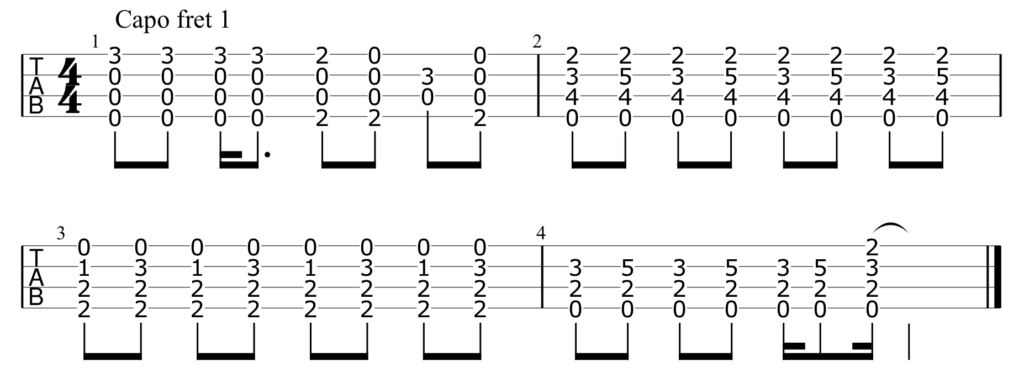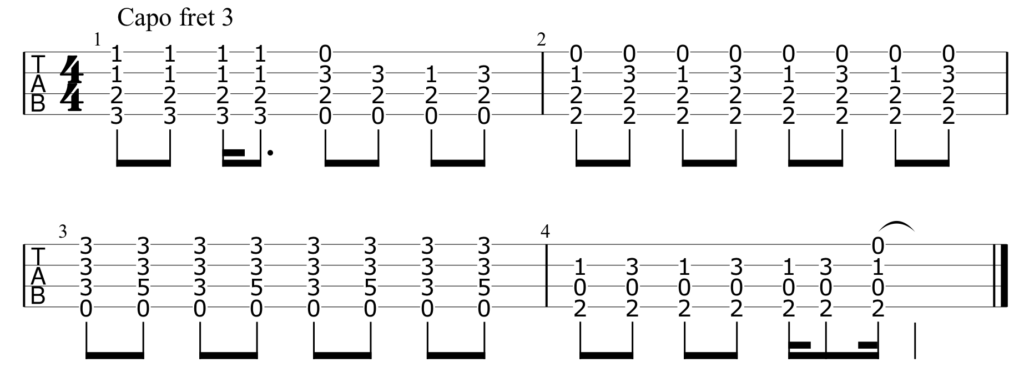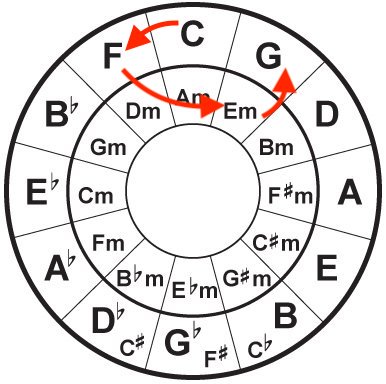I’ve written a bunch of posts about capos. But AJ pointed out that I’ve never done a post explaining why you might want to use a capo. So time to rectify that.
To Make a Song Easier to Play
Most of the time I use a capo is to make a song more uke-friendly.
When a chord progression is in a key like C# (such as When a Man Loves a Woman) it makes a lot more sense to put a capo on the first fret so the song is in the much more uke-friendly key of C. You can also use a capo to avoid chords you not comfortable with. So you might avoid dreaded E chord in songs like Wagon Wheel and Good Year for the Roses by putting a capo on the 2nd fret (making it into a D chord).
Some chord inversions would be difficult or impossible to play without a capo. For example, my arrangement of Black Hole Sun includes chords with open strings and strings fretted high up the fretboard. Which you couldn’t play without a capo unless you had Matt Berry fingers.
I often use a capo when I’m working on instrumental versions of songs. I can move the capo up and down to see which creates the best arrangement. For example, here’s a section of Across the Universe with a capo on the first fret:
But with a capo on the third fret you could play it like this:
Sometimes I’ll leave the capo on for the final version of the tune (as I did with Across the Universe). And sometimes I’ll take it off e.g. Feel It Still.
To Move a Song into Your Vocal Range
Luckily for me, my voice sounds equally terrible in all keys. But if you come across a song that’s outside of your vocal range you could use a capo to move the song into a key you’re more comfortable with. You could, of course, do this by transposing the chords. But a capo will let you use the chord shapes as they’re written.
To Change the Tone of the Ukulele
Playing with a capo high on the ukulele really changes its tone. This is a trick that Keston Cobblers’ Club use on Pett Level (and many of their songs). The high capo gives the ukulele a sharp, mandolin-like tone.
It’s a trick guitarists often use to give them a ukulele-ish tone. The obvious examples being Here Comes the Sun (which works so well on D-tuned ukulele I’m half convinced Harrison wrote it on one) and Jason Mraz’s I’m Yours.
To Make the Sound of a Ukulele Group Richer
When you have a whole group of ukuleles playing together it can sound a bit monotone if you don’t mix things up. By introducing capoed chords you increase the range of notes that are being played creating a fuller sound.
In this example I’m playing two ukuleles (one panned slightly left one right) both playing this progression:
C – F – G7 – C – F – G7 – C – G7 – C
In this example one ukulele is playing the open chords while the other has a capo on the 7th fret playing the chord shapes F – Bb – C7 – F – Bb – C7 – F – C7 – F (these work out to the same chord progression):
Transposing Chords for a Capo
If you’re convinced of the usefulness of capos, you might want a bit of helping transposing songs so you can actually use one. Here are a few tools that come in handy.
Circle of Fifths: You can transpose songs just by using the circle of fifths. The relationship between the notes on the circle of fifths is the same the whole way around the wheel. Move one segment clockwise anywhere on the wheel and you go up a fifth (hence the name). Move one segment anti-clockwise and you always go up a fourth. The same goes for any amount you move. Meaning all you have to do to transpose is recreate the pattern of chord changes starting on the chord you’re transposing to.
For example, you have a song with this progression:
Eb – Ab – Gm – Bb
You might want to transpose it to C to make it easier to play. Since Eb is three frets above C, you can do this by putting a capo on the third fret. To transpose the progression all you have to do is match the same pattern on the circle of fifths starting at C.
On the circle of fifths Ab is one segment anti-clockwise from Eb. To transpose to the key of C you move one segment anti-clockwise from C to get F. Similarly Gm is the minor chord one segment clockwise from Eb. The equivalent for C is Em. Finally, Bb is one segment clockwise from Eb. So the equivalent for C is G. Making the final progression:
C – F – Em – G
Logue Transposer: Logue’s transposer is a really handy (and old) tool. You can put whole chord sheets in and it’ll transpose it for you. Using the same example, if you paste this in:
Eb – Ab – Gm – Bb
Then select the old key of Eb and the new key of C. Press “Click Here!” and it’ll spit out the new progression C – F – Em – G.
Ultimate Guitar: Ultimate Guitar has chords (of varying accuracy) for loads of songs. They also have a handy transposing tool. At the bottom of a standard chord page there’s a little box allowing you to transpose all the chords in the song. So if you were playing with a capo on the third fret you’d hit the minus sign three times and you’re set.







Good stuff. Though I can hear the remains of the collective guitarnet screaming “CAPOS ARE FOR CHUMPS!!!” somewhere off in the distance…
I don’t dig the uke-y sound of a capo beyond the first few frets so instead of changing my uke to work in the key of the song, I’ve recently taken to changing the song/recording into a key that works well on the uke and with my voice. Sort of an inverse capo (also probably for chumps). I do this via the Anytune app.
Not so useful if you’re determined to play along with the original recording, but since this is usually my approach to learning tunes I’ll eventually perform solo, it’s not a problem.
Between this approach and a traditional capo, I would think you can adapt pretty much anything to ‘ukulele pretty painlessly.